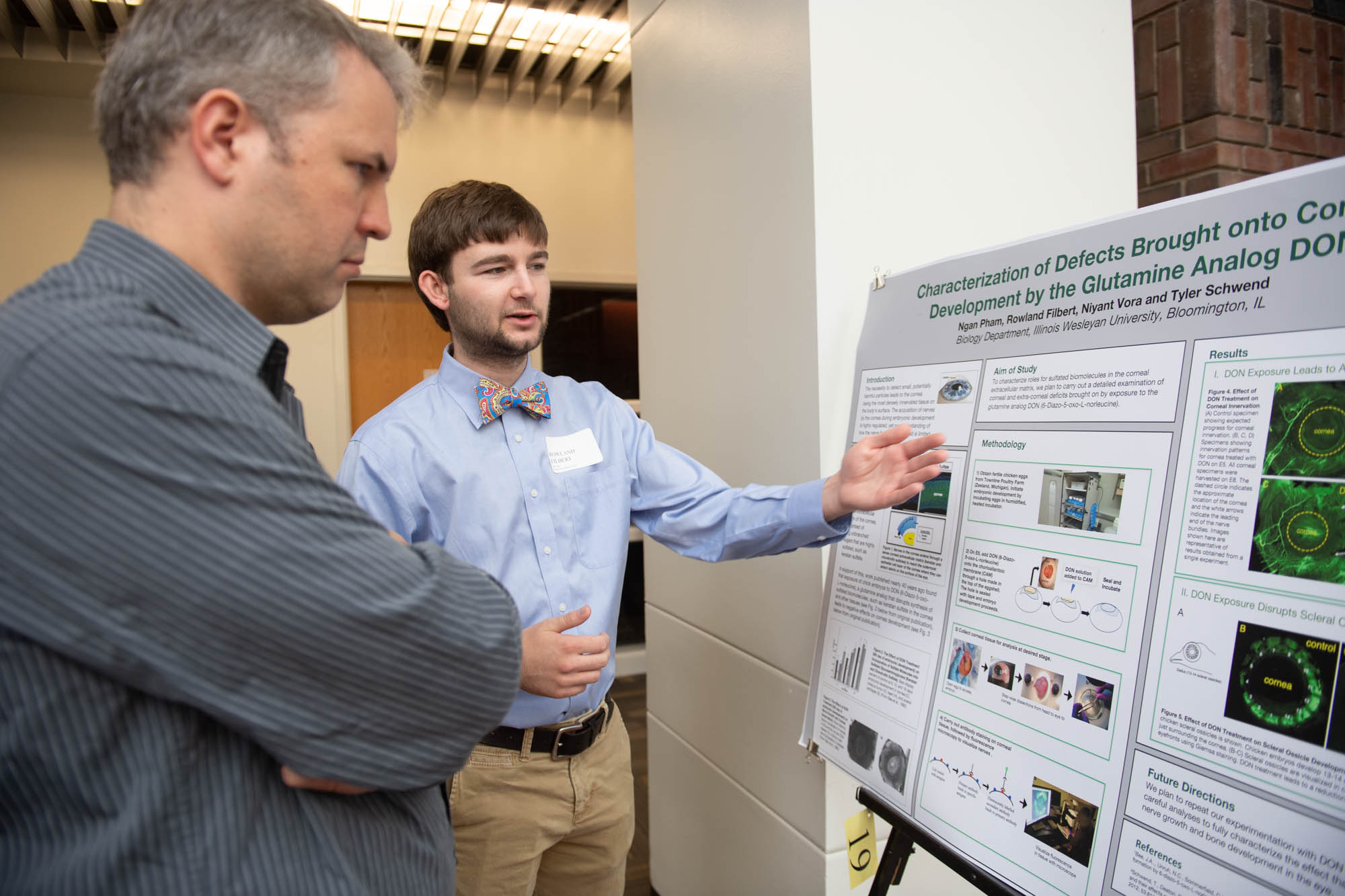Student Research
Participating in research can enrich and broaden your academic experience. If you’re interested in gaining research experience you may offer to help a faculty member with ongoing research, assist a fourth-year student involved in the Undergraduate Thesis Program, or complete a project in the Undergraduate Thesis program as a fourth-year student.
The thesis is an original, year-long research project for academic credit, supervised by a faculty member. After planning a research project, each student involved in the program will carry out the research and analyze their data. The student then has the opportunity to present the study at the John Wesley Powell Student Research Conference at the end of their senior year.
While a thesis course helps prepare for graduate school, many students have taken the course who don't plan to attend graduate school, so they can spend time on a topic they love.
Student Research Spotlight
Characterization of Defects Brought onto Corneal Development by the Glutamine Analog Don
 by Rowland Filbert, Ngan Pham, Niyant Vora
by Rowland Filbert, Ngan Pham, Niyant Vora
Honors Research Spotlight
Task Specificity and Functional Outcome: What is best for Post-Stroke Rehabilitation?
by: Rachel Tomazin '19
On the Nature of Synesthesia: A Learned Association or Something Different?
by: Niyant Vora '19
Abstract: Synesthesia is a phenomenon that has captivated the interest of many researchers, as it is a unique experience of the blending of the senses. The following study was conducted in an effort to understand whether synesthetic experiences can be learned, as Bor, Rothen, Schwartzman, Clayton, & Seth (2014) claimed. While there has been much research demonstrating that synesthesia is more common in the population than previously thought, and likely to develop in young children as a learning mechanism (Watson et al., 2017a), there have not been as many event-related brain potential (ERP) studies conducted on synesthesia. ERP studies are important for synesthesia, since neural phenomena are often best measured through brain monitoring technologies, such as magneto/electroencephalography (MEG/EEG), ERP, functional Magnetic Resonance Imaging (fMRI). The current study utilizes the measurement of continuous neural data through a pre- and post-test ERP study monitoring changes occurring at the Pz electrode site for the visual N100, auditory N100, and the P300 ERP components in 15 neurotypical, non-synesthetic college-age adults. The goal of this study was to understand whether non-synesthetes can have a synesthetic experience or are merely forming a learned association after 4 weeks of grapheme-color task, and chromesthesia task training. The results show that while participants can be trained to form learned associations between letters and colors, and sounds and color as shown by a significantly reduced P300 amplitude, they do not seem to have synesthetic experiences as was previously indicated—as demonstrated by the nonsignificant change in both N100 components.
